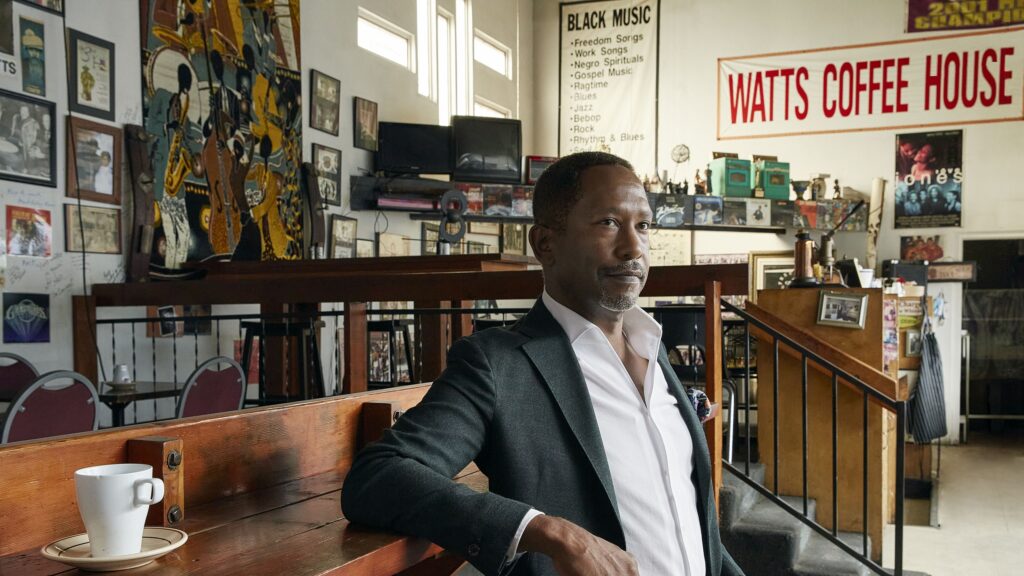The Los Angeles neighborhood of Watts is home to Simon Rodia’s Watts Towers, perhaps the best-known work of folk art in the country. But another landmark there is awaiting recognition. The handsome circa 1970 Watts Happening Cultural Center was once a community hub for artists, writers, musicians, and political organizers. Now the two-story building, designed by the Black architects Robert Kennard and Arthur Silvers, is closed to the public. Brent Leggs, a senior vice president of the National Trust for Historic Preservation, would like to see it thrive again—and he is working to make that happen.
In fall of 2022, the center became one of eight grant recipients from the new Conserving Black Modernism program, part of the trust’s African American Cultural Heritage Action Fund. Focused on protecting and celebrating the contributions of African American architects to the modernist movement, the initiative is backed by a $3.1 million gift from the Getty Foundation, the trust’s partner in the program. Joan Weinstein, the foundation’s director, says the goal is to identify buildings “that speak to the experiences of Black communities and shed light on the talents
and resilience of Black architects in 20th-century America.”
The project began when executives at the Getty, which has made preserving modernist architecture a priority, decided to do more to recognize the contributions of minorities within that movement. For advice, they reached out to Mabel O. Wilson, a Columbia University professor of architecture and African American studies. She suggested they speak to Leggs, executive director of the trust’s African American Cultural Action Fund. In its first six years, that program has raised more than $95 million, thus far dedicating $20 million to support 242 sites, including the estate of Madam C. J. Walker in Irvington, New York, and Nina Simone’s birthplace in Tryon, North Carolina.
“At the National Trust we believe the design contributions of African Americans have been underappreciated,” says Leggs. Now based in Washington, DC, he grew up in Paducah, Kentucky. After receiving a BA and an MBA at the University of Kentucky, he was “soul-searching” when a 15-minute conversation with the director of the historic preservation department, he says, “changed my life.” Soon after, he became the first African American to enroll in that program, later working at the Kentucky Heritage Council before joining the trust in 2005. In the years since, he has built a national network of preservationists fighting to save landmarks of African American history.


